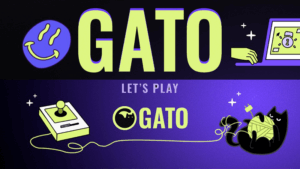Do you know the system that exists to classify video games? In this article we are going to explain everything you need.
Let’s start with a bit of history, officially the birth of the classification of video games as a priority emerged in 1994 in the United States but there are many antecedents, from Nintendo that after launching the NES on the market (1983 to 1987) had its own controls to the voluntary inclusion by developers and publishers from that time of various warnings in their games.
But being a young industry many shared regulatory standards didn’t exist until 3 games would change everything, the mythical Mortal Kombat, the original Doom and perhaps a lesser known game today, Night Trap (horror game released in 1992). Behind the controversy that these titles caused at the time a union between major developers and publishers led to the founding of the Interactive Digital Software Association or IDSA with the aim of creating a self-regulation system to classify videogames by their content according to age.
ESRB

Entertainment Software Rating Board (ESRB) is the evolution of the first self-regulatory body the IDSA and before continuing a very important clarification, each country or region has its own regulatory bodies and classifications (generally they are an application of the age restrictions that arose from their classifications coming from the cinema) but in this article we will see the most recognized and used.
Returning to ESRB there are currently 6 types of classifications:
Content is generally suitable for ages 10 and up. May contain more cartoon, fantasy or mild violence, mild language and/or minimal suggestive themes.
Content is generally suitable for ages 13 and up. May contain violence, suggestive themes, crude humor, minimal blood, simulated gambling and/or infrequent use of strong language.
Content is generally suitable for ages 17 and up. May contain intense violence, blood and gore, sexual content and/or strong language.
Content suitable only for adults ages 18 and up. May include prolonged scenes of intense violence, graphic sexual content and/or gambling with real currency.
Not yet assigned a final ESRB rating. Appears only in advertising, marketing and promotional materials related to a physical (e.g., boxed) video game that is expected to carry an ESRB rating, and should be replaced by a game’s rating once it has been assigned.
But… How does it work? There are two rating methods. The first one oriented to games with physical distribution formats and consists of a questionnaire that is completed by the publisher, mentioning the type of content that the game may have and finally a questionnaire. Gameplay recording of the game is send which is evaluated by a team that grants a classification. Finally this information is compared and the game is classified for launch (this classification is not fixed and may change over time depending on the content added or removed from a video game).
In exclusively digital format since 2013 the IARC is used for content classification. Which consists of filling in and submitting a questionnaire for the automatic classification of the game but let’s not get ahead of ourselves.
If you got to this point in the article would you think this self-control system is fine… but is there a real penalty for non-compliance with it? and the answer is yes, from fines that can reach 1 million dollars or the withdrawal of the game from virtual stores and a halt to the distribution of physical copies of it are some of the penalties that a publisher at fault may experience.
PEGI

Pan European Game Information (PEGI) as you will realize is the European self-control system which is used by a total of 38 countries and was born in 2003 to seek to unify the various classification systems that existed so far in Europe. This age rating system was developed by the Interactive Software Federation of Europe (ISFE). It currently consists of 5 types of ratings:





IARC – INTERNATIONAL AGE RATING COALITION

The large volume of production and publication of exclusively digital titles led to an effective way to classify these titles and give a safer context to their players. Therefore in 2013 the International Age Rating Coalition (IARC) was born.
This self-regulatory system was designed with the collaboration of rating authorities and with the advice of numerous game manufacturers and digital stores to create a unified system that translates its classification into the classification that a product would have in each country or region.
The methodology is simple, a form is filled out, sent and the result is received almost automatically, giving a classification to the game. Then it is up to each agency to review said classification. This allows publishers and developers of entirely digital products to have an agile and reliable classification method.
THOUGHTS AND MY OWN OPINION
Currently there is no truly unified single classification system for everyone and being realistic despite the existence of sanctions, in a practical way they only affect titles mainly that have releases on physical media. The majority of exclusively digital launches despite having the IARC system, if they are developed by indies or hobbyists and launched by digital stores or media that are not added to this system, self-regulation remains in the hands of the digital store (in the case of the App Store ) or the developer.
Which is not a bad thing per se but it does create irregularities and sometimes abuse with false classifications.
On the other hand, there is a greater problem, the lack of knowledge about these age classification systems that the general public has, I can give as an example that several times it happened to me that an outraged parent in video game events where we participated, asked me. Why do developers make games so violent or that scared their children?…
Giving rise to an explanation on my part about the existence of the classification of games by age and also inviting them to take part more actively in their children’s games sessions, since playing with them is the best way to learn about games and be more conscientious when buying them, considering the classifications and age of their children’s.
Finally, I hope that this article contributes to inform a little more about this topic, that it can be really useful, because creating a more aware industry and a more educated public on this subject is still the responsibility of the developers.




No comment yet, add your voice below!